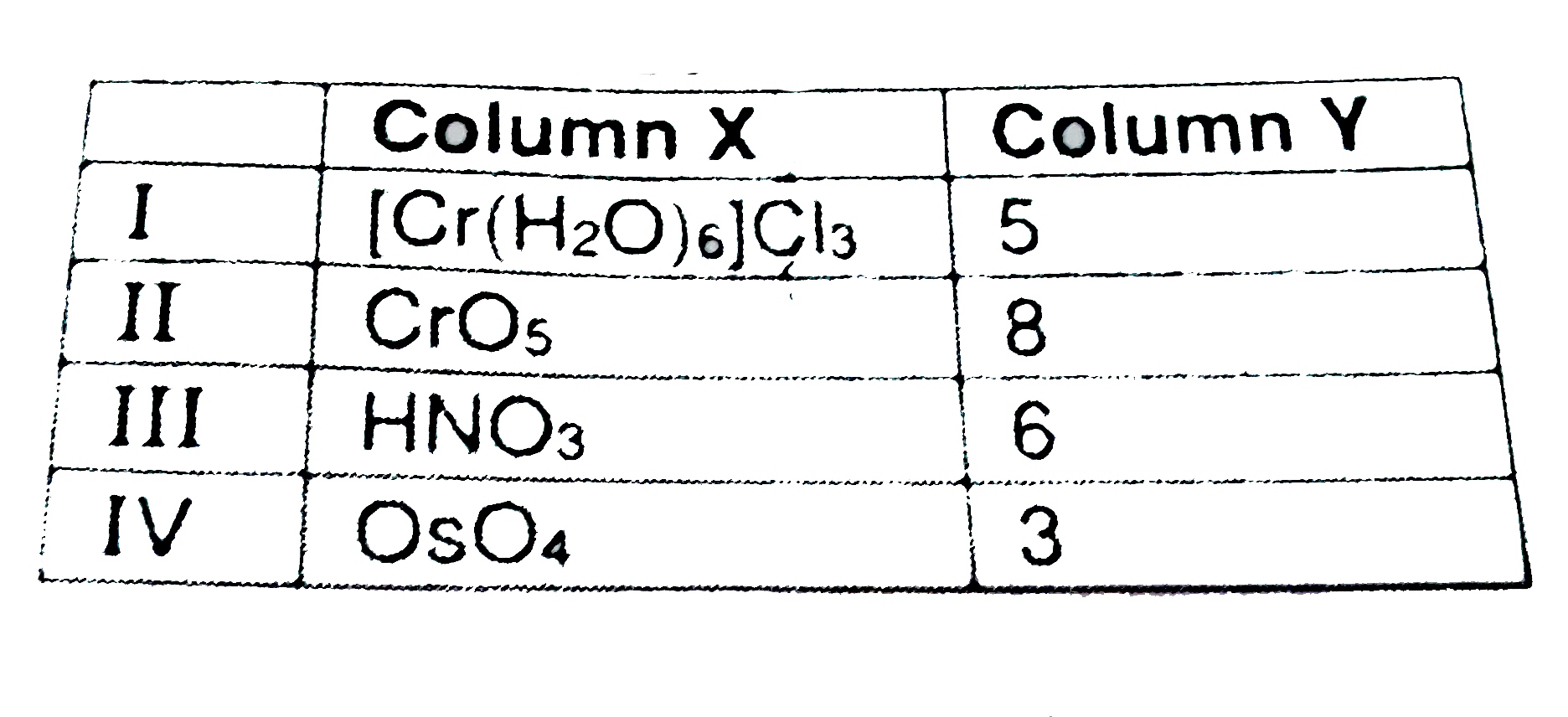Ammonia forms the complex [Cu(NH3)4]2+ with copper ions in alkaline solution but not in acid solution. The reasons for it is:
In acidic solutions hydration protects copper ions.
In acidic solution protons co-ordinate with ammonia molecules forming NH+4 ions and NH3 molecules are not available.
in alkaline solutions insoluble Cu(OH)2 is precipitated which is soluble in excess of any alkali
Copper hydroxide is an amphoteric substances.
The correct Answer is:B
Step by step video, text & image solution for Ammonia forms the complex [Cu(NH_3)_4]^(2+) with copper ions in alkaline solution but not in acid solution. The reasons for it is: by Chemistry experts to help you in doubts & scoring excellent marks in Class 11 exams.
Updated on:21/07/2023Topper's Solved these Questions
- D & F-BLOCK ELEMENTS & THEIR IMPORTANT COMPOUNDS Book:RESONANCEChapter:D & F-BLOCK ELEMENTS & THEIR IMPORTANT COMPOUNDS Exercise:Additional Problems for Self practice (APSP)
Explore 30 Videos
- D & F-BLOCK ELEMENTS & THEIR IMPORTANT COMPOUNDS Book:RESONANCEChapter:D & F-BLOCK ELEMENTS & THEIR IMPORTANT COMPOUNDS Exercise:National Standard Examination In chemistry
Explore 35 Videos
- D & F-BLOCK ELEMENTS & THEIR IMPORTANT COMPOUNDS Book:RESONANCEChapter:D & F-BLOCK ELEMENTS & THEIR IMPORTANT COMPOUNDS Exercise:Exercise 2
Explore 40 Videos
- CHEMICAL EQUILIBRIUMBook:RESONANCEChapter:CHEMICAL EQUILIBRIUMExercise:Advanced Level Problems (Part-3)(Stage-5)
Explore 2 Videos
- GASEOUS STATEBook:RESONANCEChapter:GASEOUS STATEExercise:PHYSICAL CHMISTRY (Gaseous State)
Explore 47 Videos
Similar Questions
The maximum oxidation state shown by V(Z=23),Cr(Z=24),Co(Z=27),Sc(Z=21), are respectively
View SolutionThe aqueous solution of salt of a transition metal ion changes colour from pink to blue, when concentrated hydrochloric acid is added to it. The change in colour is due to:
View SolutionMatch the compounds of column X with oxidation state of central atom in column Y.
 .
.
View SolutionAn alloy consists of rubidium and one of the other alkali metals. A sample of 4.6g of the alloy when allowed to react with water, liberates 2.241dm3 of hydrogen at STP.
Relative atomic masses: AT(Li)=7,AT(Na)=23,AT(K)=39,AT(Rb)=85.5,AT(Cs)=1.33
Which alkali metal is the component of the alloy?
View SolutionA certain quantity of a gas occupied 100ml when collected over water at 15∘C and 750mm pressure . It occupies 91.9ml in dry state at NTP. Find the V.P. of water at 15∘C
View SolutionAmmonia forms the complex [Cu(NH_3)_4]^(2+) with copper ions in alkaline solution but not in acid solution. The reasons for it is:
View SolutionAmmonia forms the complex [Cu(NH3)4]2+ with copper ion in alkaline solution but not in acidic solution. This is due to the reason that :
View SolutionAmmonia forms the complex [Cu(NH_(3))_(4)]^(2+) with copper ions in alkaline solution but not in acid solution. The reason for it is :
View SolutionAmmonia forms the complex [Cu(NH3)4]2+ with copper ions in alkaline solution but not in acid solution. The reasons for it is:
View SolutionAmmonia forms the complex [Cu(NH3)4]2+ with copper ions in alkaline solution but not in acid solution. The reasons for it is:
View SolutionAmmonia forms the complex [Cu(NH_(3))_(4)]^(2+) will copper ions in alkaline solution but not in acidic solution. The reason for this is
View Solutionअमोनिया, क्षारीय विलयन में, कॉपर आयनों के साथ मिलकर [Cr(NH3)4]2+ संकुल आयन बनाती है, लेकिन अम्लीय विलयन में नहीं। इसका क्या कारण है
View SolutionAmmonia forms the complex ion [Cu(NH_3)_4]^(2+) with copper ions in alkaline solutions but not in acidic solutions. The reason is
View SolutionAmmonia forms the complex [Cu(NH3)4]2+ with copper ions in alkaline solution but not in acid solution. The reasons for it is:
View SolutionAmmonia forms the complexion [Cu(NH_3)_4]^(2+) with copper ions in alkaline solutions but not in acidic solutions. What is the reason for it?
View SolutionAmmonia forms complex [Cu(NH3)4]2+ with copper ion in alkaline solution and not in acidic solution. The reason for this is
View Solution
